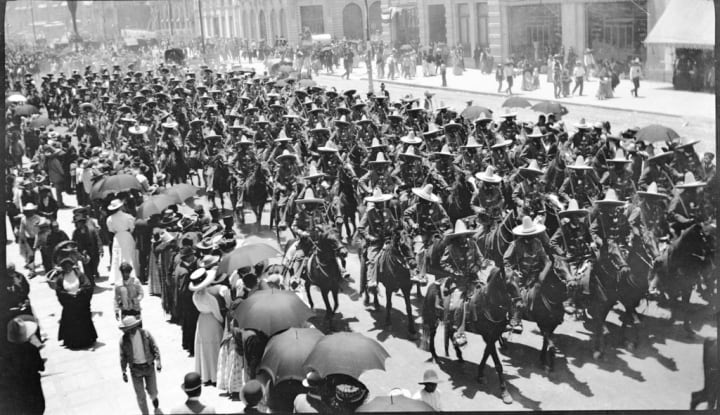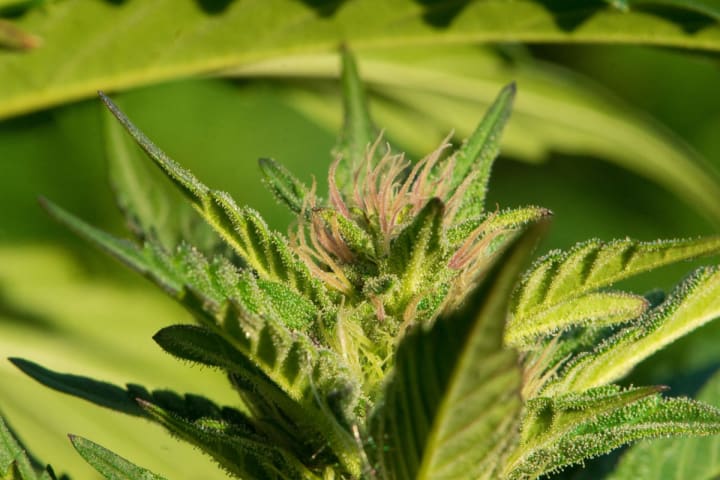Why Marijuana Is Illegal in the First Place
Discrimination, religious groups, and money all play a part in why marijuana is illegal after all these years.

Marijuana has countless medicinal applications (including juicing!) and has lead to plenty of good times. Nonetheless, marijuana is illegal for reasons that seemingly make no sense. Marijuana is not associated with overdoses like opioids are, people's behavior under the influence of marijuana is not as reckless as their behavior when under the influence of alcohol, and the criminal associations with marijuana is a direct consequence of it being framed as criminal. Unfortunately, like too many of the laws and social mores in America, the criminalization has more to do with maintaining existing power structures than with protecting the public's general interest.
The Mexican Revolution

After the Mexican Revolution, America saw an increase in Mexican Americans. That meant a lot more exposure to Mexican culture, customs, and language. As is often the case, Americans were scared by this change and the media played up those fears for profit. That included playing up the “dangers” of cannabis, even though cannabis was something Americans were comfortable with at the time (it was used for medicinal and recreational purposes).
Sensationalist Media
How did the media make Americans afraid of something they were already comfortable with? Simple: they started calling cannabis what Mexicans were calling it! And, just like that, cannabis became “marijuana.” And the Mexicans that Americans were already interacting with on a regular basis? The media started calling them “disruptive.” Suddenly Americans had images of dangerous outsiders under the influence of an unpredictable substance causing all sorts of damage to their communities. Those cultural changes are in large part why marijuana is illegal. It's the same logic that explains how ICE abuses undocumented immigrants under the guidance of the federal government.
Criminalizing Marijuana
So what happened next? The city of El Paso, Texas decided to tamp down on the presence of Mexicans in the same way that San Francisco tamped down on the presence of Chinese Americans: by passing laws against their leisure activities. For the Chinese that meant making opium against the law, and for Mexicans that meant making marijuana against the law. Once a new criminal class was created, the US federal government was able to do with Mexicans whatever they pleased. Search them, detain them, and even detain them. Sound familiar? It should. America does it a lot!
Marijuana panic continued throughout the early 20th century. A church group financed the famed anti-cannabis propaganda film Reefer Madness. Within the world of the movie, cannabis consumption inspires several deaths, including ones caused by a hit-and-run, a brutal beating, and a handgun. If anyone was suffering from marijuana inspired madness it was the companies funding films with such hysterical titles as Assassin of Youth (1937), and Devil’s Harvest (1942).
The Marihuana Tax Act of 1937
In the 30s, people started saying the men of color were becoming violent and aggressively sexual toward white women as a result of marijuana usage. It was behavior that played into pre-existing biases held toward men of color, so it wasn’t too hard to spread more bigoted lies. The uproar that followed inspired the Marihuana Tax Act of 1937, which passed so that the commercial sale of hemp and cannabis could be taxed. Sound familiar? It should! It's exactly what happened to Mexican Americans only decades earlier. Once again, discrimination is in large part why marijuana is illegal.
The Controlled Substances Act
Deemed unconstitutional decades later, the Marijuana Tax Act of 1937 was replaced by the Controlled Substances Act. Substances were ranked using “schedules,” which indicated how addictive and dangerous drugs were. Marijuana, which just decades ago was valued for its medicinal uses, was placed in the most dangerous category—Schedule I drug. Even though a commission had advised the Nixon administration to change the classification of marijuana, the President had decided against it. That’s the category that marijuana remains in to this day—but not everywhere!
The Many Uses of Marijuana

There are many reasons why you should drink cannabis tea. It reduces the likelihood of Alzheimer's, heart disease, or sleepless nights. And as the Washington Post reported, a study published in Health Affairs found that the number of painkillers prescribed in states in which medical cannabis is legal is drastically less. So, as you can imagine, pharmaceutical companies take numerous steps to oppose the legalization of marijuana.
As reported by The Nation, groups like Community Anti-Drug Coalitions of America and the Partnership for Drug-Free Kids get a lot of their funding from pharmaceutical companies, which has shaped their approaches to both opioid abuse and marijuana use. And, as noted by The Guardian, in Arizona, Insys, a major pharmaceutical company, helped finance a successful campaign to stop the passage of a law to legalize recreational marijuana use.
Private Prisons
As reported by Project Uncensored, Human Rights Watch observed 574,641 arrests in 2015 for small amounts of cannabis intended for personal use. That's over 50% of drug arrests. In 2016, the Obama administration tried to curtail the use of private prisons, but once Trump took office, that rollback was quickly ceased. As noted by The Hill, private prisons donated $500,000 to Trump's campaign. And while The Corrections Corporation of America (CCA) may state that they don't intend to influence legislation one way or the other, it's certainly on their minds. The CCA listed legalization of marijuana as a potential adverse factor on future profits as part of a SEC filing.
Police Unions
Business Insidertook note that law enforcement unions were among the groups fighting against decriminalization of marijuana in Maine. And, as reported by The Intercept, when California had a vote on the decriminalization of marijuana, police and prison guard groups had as much as 50% of the funds against the legislation. Law enforcement officials did the same in Florida in 2014.
Decriminalization of Marijuana

Since 1996, the United States has been slowly approving the use of marijuana for medicinal and even recreational use. Today, 30 states plus DC have made medical marijuana usage legal, and many of those states have allowed for recreational use as well. A 2018 study by the Pew Research center revealed that 61% of Americans support marijuana legalization, so it's just a matter of time until toking up is legal everywhere. And when that time comes, we better all remember the reasons marijuana is illegal because America has a history of passing discriminatory laws.
About the Creator
Ben Kharakh
Manic pixie dream goth. With appearances in Fortune, Vice, Gothamist, and McSweeney's.@benkharakh






Comments
There are no comments for this story
Be the first to respond and start the conversation.